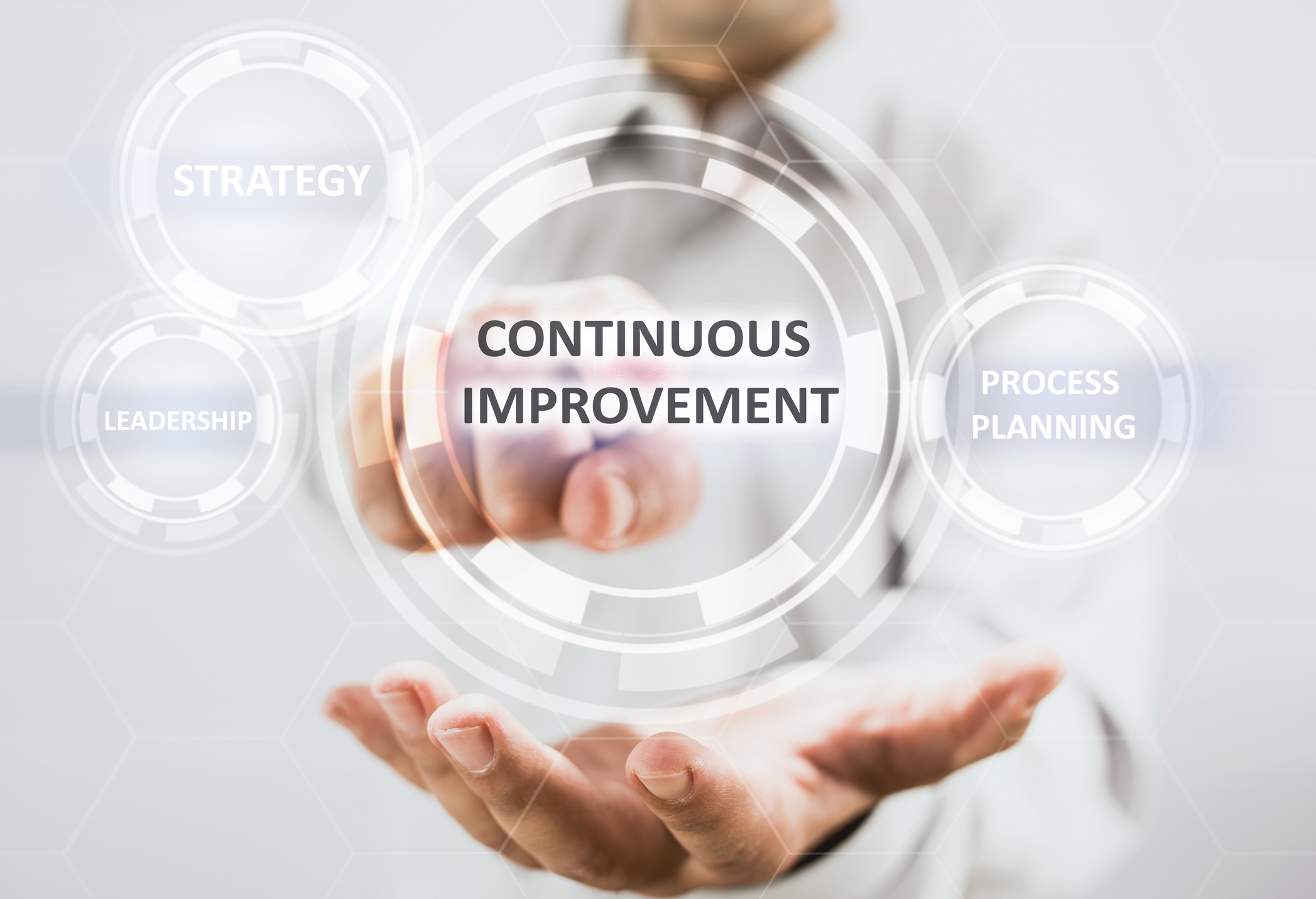August 27, 2018
Getting Your Revenue Cycle Team on Board with Continuous Process Improvement

If you hear the phrase “continuous process improvement” and immediately think of Six Sigma consultants and analysts who sound like they’re speaking another language, it’s time to take a new look at the concept (especially since it’s something you’re probably dabbling in already).
Continuous process improvement is simply making an effort to clean up inefficiency, poor communication, and wasteful workflows to help you hit your goals. In the hospital revenue cycle, especially on the patient-facing side, you have a tremendous opportunity to improve your patient engagement processes, but only if you’re optimizing the involvement of your internal teams.
Start with Leadership Buy-in
Keep in mind that any process improvement is essentially a cultural change. This means top-down involvement will be critical to spreading the importance of quality to your team. Both organizational and department-specific leaders will need to be involved in any process improvement initiatives you launch. Their connection needs to start from the beginning to facilitate clear communication, reinforce the message of process improvement, and ensure that everyone is playing their part.
Keep a Patient Perspective
While revenue cycle leadership can learn a lot about process improvement from other industries, healthcare is also subject to an industry-specific challenge — you’re not just trying to improve revenue cycle processes. You must also enable your patient-facing team to get involved in process improvements in a way that puts patients first, something that patient-facing staff is uniquely equipped to do given their experiences and insights. “Patient obsessed” process improvement might require a shift in perspective, especially if you’re more familiar with the concept in relation to billing and cleaning up workflows.
Rethinking process improvement is a chance to extend your existing patient engagement and patient experience initiatives deep into your revenue cycle processes. For your patient-facing staff, this will require a direct focus on patient satisfaction and understanding the crucial role they play in not only shaping the patient experience but also informing and improving the processes they use every day. On a practical level, if you look at most process improvement frameworks, you’ll see a similar cycle that falls into the pattern of:
- Plan: Decide what you will do and how it will be measured
- Do: Execute your plan and measure results
- Check: Compare results to expectations
- Act: Maintain your gains and learn from the experience
If you’ve heard of the Deming Cycle, this probably looks familiar. If it doesn’t, consider reading about its applications in healthcare, especially if you want to empower your team as critical agents in improving the patient experience.
Your patient-facing staff plays a critical role throughout the loop, but especially in the Act phase, where you’re learning from previous experiences.
Get Your Team Involved
If you’re currently generating KPIs and benchmarks without input from patient-facing staff, you’re missing an amazing opportunity to leverage the unique insight your staff has accumulated from their close interactions with patients.
For example, some experts view patient engagement as comprising four elements: ownership, commitment, informed choice, and navigation. How are your patients exhibiting these elements? Are you relying on self-reported surveys or also accessing the perspectives of your front-line team members? You should be striving to optimize the feedback that informs your process improvement by incorporating the perspective of all people involved.
Invest in Transparency
The importance of transparency in the revenue cycle is hard to overestimate, and that same perspective should carry over to process improvement and your patient-facing team members. They should be kept up to date, consulted, and included in meetings throughout the entire improvement process to facilitate not only real change for your patients but growth and advancement for your revenue cycle initiatives.
Remember that your employees are a powerful resource — investing in their engagement and improvement will pay off in the form of an efficient, adaptable revenue cycle that’s well-prepared to meet the changes we can expect to see in the future.
RevSpring Can Help
Integrated payment communication is part of RevSpring’s DNA. We tailor the payment conversation to influence behavior and inspire action. Our segmentation rules and workflows help you become hyper-focused on the patient, understanding their ability to pay and mapping their financial obligations to repayment pathways.
If you’d like to learn more about our comprehensive patient engagement and billing solutions, we’d love to help you. Request a demo to see how we can help your organization meet its goals.